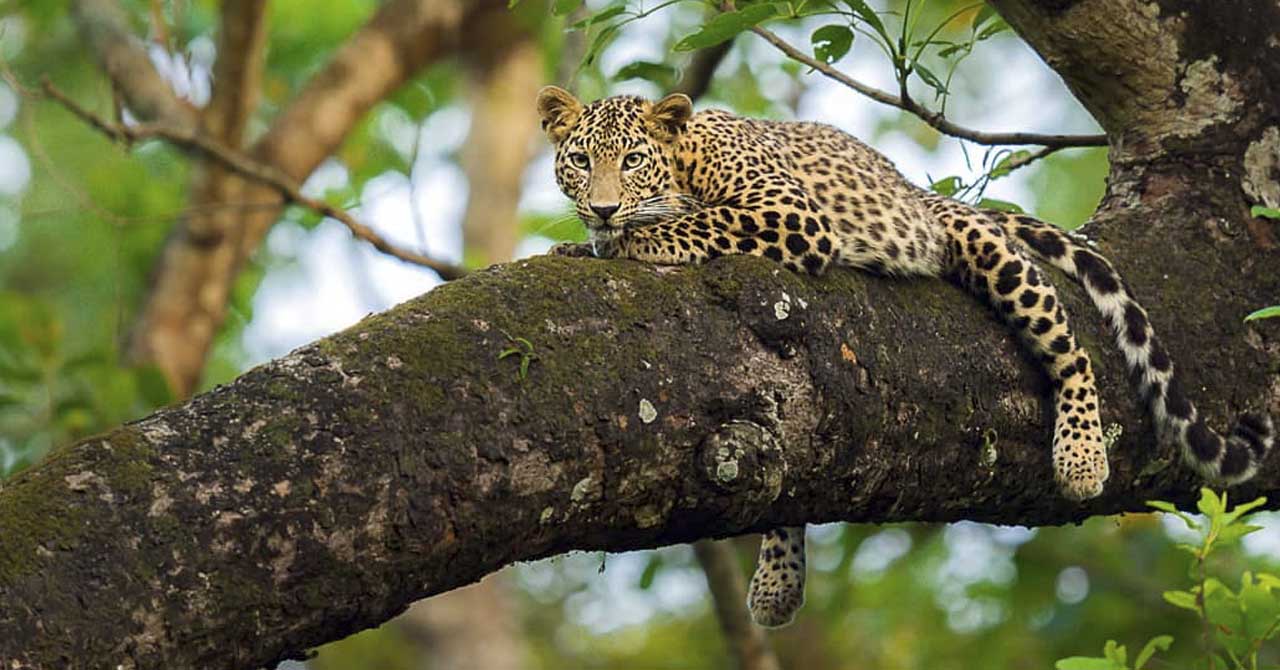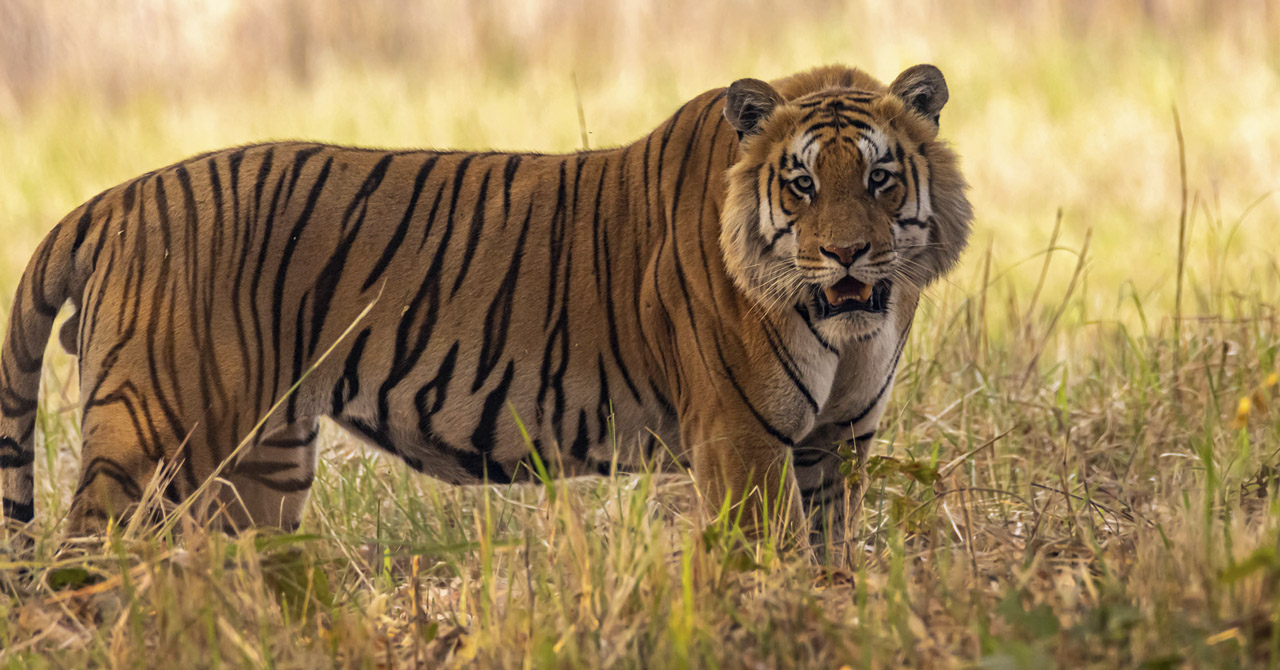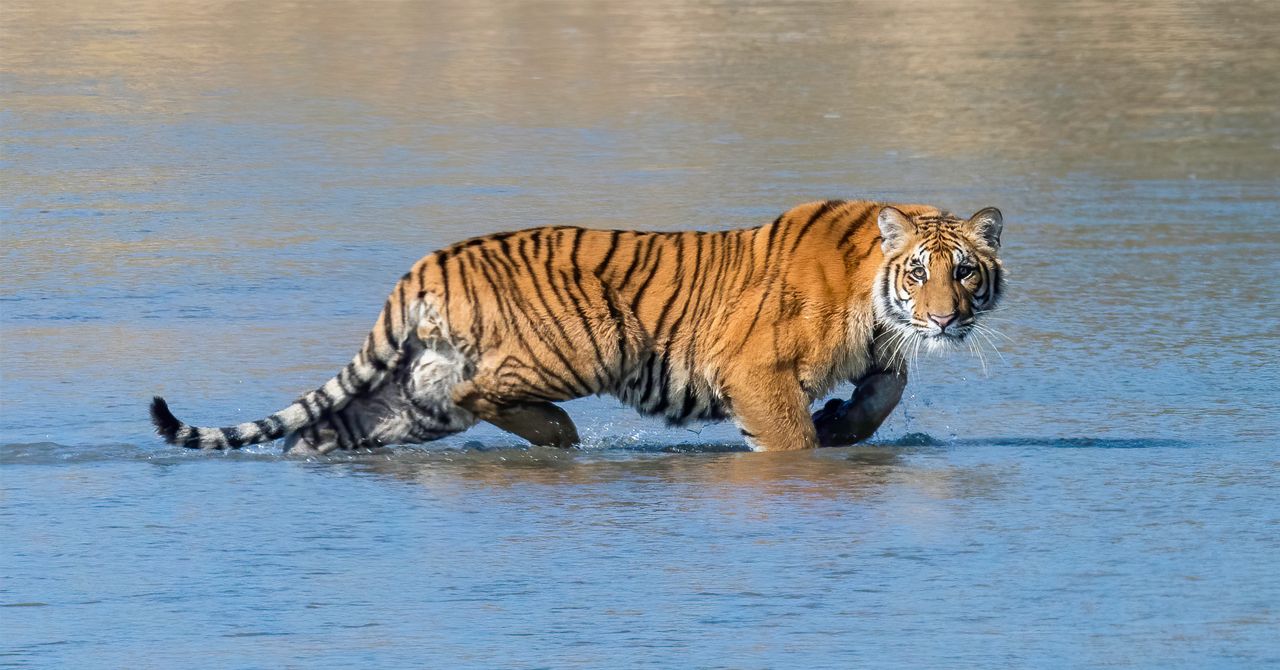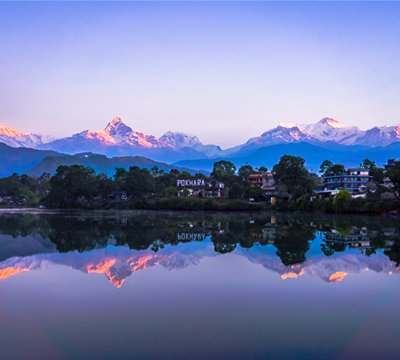- info@bestnepaltrek.com
- +977 - 9818852722
- Home
- Destination Nepal
- Nepal Tours
- Wildlife Photography Nepal Tour | Tiger Photography in Nepal
Wildlife Photography Nepal Tour | Tiger Photography in Nepal
- Altitude : 1350 m
- Transportation : Car/Bus/Plain
- Meals : Breakfast/Lunch/Dinner
- Best Season : Mar,April,May
- Trek Hour : 6
- Accommodation : Hotel
USD 3245 per person
Trip Highlights
- The Wildlife Photography Nepal Tour offers the opportunity to capture the abundance of wild habitats in Nepal.
- The wildlife photography tours are higher risk and offer a higher reward for the photographers.
- Chitwan National Park, Bardia National Park, and Koshi Tappu wildlife reserve offer an exclusive chance.
- A photographer should be in the right place at the right time to capture the moment like never before.
Wildlife Photography Tour in Nepal.
“The wide variety of wild animals makes it an ideal destination for wildlife photography tours in Nepal. The tour will take participants to different landscapes, offering them the chance to capture stunning images of wildlife. So, our Professional photographers will offer advice and tips.”
Dear wildlife photographers, Join us for Wildlife Photography Tour in Nepal. These tours offer to capture the abundance of Royal Bengal Tiger photography tours in their habitats in Nepal. Thus this tour provides an opportunity to highlight the uniqueness of this rich and diverse nation. However, it would be for those who are passionate about sharing their unique perspective. Especially, in wildlife photography, you’ll immerse yourself in Nepal’s preserved biosphere. With spectacular wildlife and a visit to the unique Tharus-resistant people, the Chitwan tour is unique.
A wildlife photography tour allows you to get an insight into Nepal’s topographic diversity. It starts from just 60 meters above sea level to over 5,000 meters above sea level. Hence, the diverse landscape of Nepal brings an opportunity to observe and capture the natural wild state. Chitwan National Park, Bardia National Park, Koshi Tappu wildlife reserve and other national parks offer an exclusive chance to embark on wilderness trips and capture wildlife that reflects the real sense of nature. Wildlife reserves, conservation areas and national parks are habitats for a variety of rare and endangered wildlife. However, Royal Bengal Tiger, One-horned Rhino, Crocodile, Four Horned Antelope, Stipend Hyena, Gangetic Dolphin and several bird species are found there.
Semi-pro compact cameras and advanced DSLR cameras with micro, prime and high focal lenses are ideal for wildlife photography. So the photographer should be in the right place at the right time to catch the moment and the important stuff. We planned this nature tour for Wildlife photographers who love to express their exceptional attitude and the natural beauty platform; it has to offer in this wealthy and diverse country. Primarily focused on the theme of Wildlife Photography, you will be able to indulge in Nepal’s marvellous preserved nature. I hope you’ll enjoy this trip without any regrets.
You will be welcomed to this mountain country-Nepal upon arrival at Tribhuvan International Airport! You'll then be transferred by one of our representatives to the respective Kathmandu hotel. You can refresh yourself at the hotel, and you'll be briefed on the tour in the evening, provided you have the necessary checklist to take you on the journey.
First, we fly to Nepalgunj (45 minutes). After landing at Nepalgunj (35km), drive to Bardia National Park. You will be greeted with complimentary beverages accompanied by a briefing on your trip, so we can reserve your space. Just freshen up and enjoy a nice snack. You will later travel to the neighbouring ethnic village of Tharu. Check for the greatest possibility of firing people's history and heritage. Enjoy the presentation or cultural events accompanied by a new nutritious meal in the evening.
Today you should get up early in the morning. After breakfast, we start our tour with an elephant ride for the Jungle Safari Tour. You will have enough opportunities to see fauna in their natural environment. Visit the best spot where you can see the most wildlife, and walk with an accomplished naturalist guide inside the National Park. Overnight at the hotel.
Begin your fresh breakfast early. Later, drive further into the National Park for wildlife spotting. Today we go within the park for monitoring of the endangered Royal Bengal Tiger. There are three separate locations named Kingfisher Ponts, Tinkune, and Balkoni. We are going to visit both places for tiger-finding. If you are lucky enough to catch the tiger's unusual shot, then back to the hotel overnight.
Today we drive to Khairapur Bardia after breakfast, where we can find and photograph another endangered species of blackbuck (Antilope cervicapra). You can find many true facts about the bird species in this place. Then, if we have time, we will drive further to Badaiya Tal. We will go back overnight to Bardia for other ways.
After breakfast, we drive to Chitwan National Park, which is one of Nepal's popular national parks for wildlife photography. It's a bit far, but we're going to take our own private vehicle, so we're going to stop for freshness along the way. Enjoy capturing the golden hour after reaching the destination in the evening, while the sun sets over the Rapti River.
We'll have our breakfast early in the morning, then drive to Madi, where we'll find the endangered Royal Bengal tiger. Chitwan National Park is home to the tiny Tharu settlement of Madi, which is the tiny Tharu settlement of Chitwan National Park. After reaching the Madi, we put our stuff in the room, have lunch, and go on to our tiger spotting place to wait for the tiger. Madi is also the best place for birding tours, where the Streaked Spiderhunter (Arachnothera Magna) is visible. Local Home-Stay overnight.
Also, today we're going to have our breakfast early in the morning and then go to our tiger place to wait for the tiger. The best place for a tiger is also in this place. If the tiger came out there, you have plenty of time in your life to shoot a memorable photo. Local Home-Stay overnight.
We bird around Madi in the morning after a successful trip, and after lunch, we drive back to Sauraha Chitwan National Park for the overnight. Chitwan is a bird paradise, so we'll be birding along the way and stopping for photography of wild birds.
After a routine early breakfast, we go for a canoe ride along the Rapti River. This is a perfect chance to see birds and see the unusual crocodile species; the marsh mugger as well as the fist-feeding Gharial. Under the guidance of an experienced naturalist, jungle walking offers a great chance to spot wildlife. You can enjoy watching the elephants taking their regular bath in the river on the way back.
Today we go to another famous Koshi Tappu Wildlife Reserve, the Koshi Mara. After an early breakfast, we drive our private car to the east. After arriving there, our guide will brief you on the activities of the next day. Today, you'll have the pleasure of visiting a nearby community to get to know its rituals and customs. Evening cultural performances should make the evening more enjoyable at dinnertime.
Today our tour starts early in the morning, after breakfast. The tour begins with four-wheel drive and boating to see wild water buffalo, waders, marsh crocodiles, and Gangetic. Also, Koshi is home to many of the rarest birds and wild buffalo. We’ll take lunch packs with us and in the evening back to the hotel.
On our second day tour, we'll go for bird-watching and enjoy the area's wetlands. Today’s highlights among the birds are the Red-napped Falcon, Great Myna, Swamp francolin, Black-necked stork, buntings, and many other wetland species. During the tour you will see Arna (Wild Water Buffaloes), blue bulls, hog deer, wild elephants, etc. evening back to the hotel.
In the morning, I go bird watching around and pack my things to depart. After breakfast, we drive to Biratnagar to catch an afternoon flight back to Kathmandu.
Today is a free day in Kathmandu where you can enjoy a late breakfast and walk around the Thamel, or the local market in Nepal, to purchase some family and friend souvenirs. Yet if you have some idea late, we realize we're able to fix it. Enjoy a farewell dinner at Nepali Cultural Restaurant after a successful trip to our country.
During your stay in Nepal, you will return to your home filled with adventure memories and enjoy the wildlife photography tour in Nepal. Our representative will help you return to your homeland when you depart.
Cost Includes
- Airports pick up and drop off by private vehicle as per itinerary.
- twin sharing double room accommodation as per itinerary with meal
- All national park entrance fees are included for everyone on the itinerary.
- Private tours in all national parks with a professional naturalist guide
- Kathmandu, Nepalgunj, and Biratnagar to Kathmandu flight tickets.
- Kathmandu Hotel, with a Bed and Breakfast plan.
- All government taxes and office expenses.
Cost Excludes
- Food for lunch and dinner in Kathmandu.
- Your international airfare and Nepal Visa fee
- Binoculars and anything for your DSLR camera gear.
- Any alcoholic beverages, mineral water, soft drinks, snacks, etc.
- Your personal medical or evacuation expenses, including travel insurance, which includes rescue.
- All accommodation is subject to flight cancellation due to bad weather if there is a helicopter charter.
- Tips for trekking crews: guide and porter and driver.
- Extra porters cost US$20 per person per day.
- Is there any extra cost for a natural disaster?
If you're planning a wildlife photography tour in Nepal, here is some useful information to help you make the most of your trip:
Best Time to Visit: The best time for wildlife photography in Nepal is during the dry seasons, which are from October to November and from February to April. During these months, the weather is pleasant, and the animals are more active and easier to spot.
National Parks: Nepal is home to several national parks and conservation areas that offer excellent opportunities for wildlife photography. Some of the popular ones include Chitwan National Park, Bardia National Park, Sagarmatha National Park, and Annapurna Conservation Area. Research these parks and choose the ones that align with the wildlife species you want to photograph.
Wildlife Species: Nepal boasts a diverse range of wildlife species, including tigers, rhinoceros, elephants, leopards, sloth bears, deer, monkeys, and a variety of bird species. Do some research on the specific species you're interested in capturing to determine the best locations and times to find them.
Hiring a Guide: It is highly recommended to hire an experienced local guide or join a guided wildlife photography tour. They have in-depth knowledge about the local wildlife, their behaviour, and the best spots for photography. A guide can significantly increase your chances of getting great shots while ensuring your safety in the wilderness.
Equipment: Bring appropriate photography equipment, including a telephoto lens for capturing distant subjects, a wide-angle lens for landscapes, a sturdy tripod, extra batteries, memory cards, and a camera bag to protect your gear from the elements.
Permits: Obtain the necessary permits and permissions for wildlife photography in the national parks you plan to visit. These can usually be obtained through the Department of National Parks and Wildlife Conservation or by partnering with a registered tour operator.
Accommodation: Research and book accommodation in advance, especially if you're visiting popular wildlife photography destinations like Chitwan or Bardia. There are various options available, ranging from luxury resorts to budget guesthouses.
Respect Wildlife and Environment: Remember to respect wildlife and their natural habitat. Maintain a safe distance from the animals, follow park regulations, and avoid disturbing their natural behaviour. Leave no trace and practice responsible tourism.
Safety: While Nepal's national parks offer incredible wildlife encounters, it's essential to prioritize safety. Follow the guidance of your guide, stay on designated trails, and be cautious of any potential risks associated with wildlife encounters or outdoor activities.
Cultural Experience: Nepal is rich in culture and traditions. Take some time to explore the local communities, interact with the people, taste traditional cuisine, and learn about their way of life. This can add a unique dimension to your wildlife photography tour.
Remember to plan ahead, be patient, and enjoy the process of capturing stunning wildlife photographs in the beautiful landscapes of Nepal.
Certainly! Here are some frequently asked questions about wildlife photography tours in Nepal:
Q: What is a wildlife photography tour in Nepal?
A wildlife photography tour in Nepal is an organized trip that allows photographers to explore and capture images of the diverse wildlife found in the country. It typically involves visiting national parks, wildlife reserves, and other natural habitats to photograph animals, birds, and their natural environments.
Q: Which are the best national parks and reserves for wildlife photography in Nepal?
Nepal is home to several national parks and wildlife reserves that offer fantastic opportunities for wildlife photography. Some of the popular ones include Chitwan National Park, Bardia National Park, Sagarmatha National Park, and Koshi Tappu Wildlife Reserve.
Q: When is the best time to go on a wildlife photography tour in Nepal?
The best time for a wildlife photography tour in Nepal depends on the specific animals or birds you want to capture. Generally, the autumn months of September to November and the spring months of February to April are considered ideal. These periods offer pleasant weather, clear skies, and good wildlife sightings.
Q: What kind of wildlife can I expect to photograph in Nepal?
Nepal boasts a rich biodiversity, and you can expect to photograph a variety of wildlife species. Some common animals include tigers, rhinos, elephants, sloth bears, deer, monkeys, and numerous bird species such as peafowl, vultures, eagles, and migratory birds.
Q: Do I need to have advanced photography skills to join a wildlife photography tour?
No, you don't necessarily need advanced photography skills to join a wildlife photography tour in Nepal. However, having a basic understanding of photography techniques and your camera settings will certainly enhance your experience. Some tour operators may also provide guidance and assistance to help you improve your skills during the tour.
Q: How long do wildlife photography tours in Nepal typically last?
The duration of wildlife photography tours can vary depending on the specific itinerary and tour operator. Tours can range from a few days to a couple of weeks, allowing participants ample time to explore different locations and maximize their photography opportunities.
Q: What equipment should I bring for a wildlife photography tour in Nepal?
It is recommended to bring a DSLR or mirrorless camera with interchangeable lenses to capture wildlife photographs effectively. A telephoto lens (300mm or longer) is essential for capturing animals and birds from a distance. Additionally, carrying extra batteries, memory cards, a sturdy tripod, and lens-cleaning accessories is also advisable.
Q: Are wildlife photography tours in Nepal environmentally friendly?
Responsible tour operators prioritize the well-being and conservation of wildlife and their habitats. They ensure that tours follow ethical practices and adhere to local regulations to minimize disturbance to animals and ecosystems. Look for operators with a commitment to conservation and sustainable tourism.
Q: Are there any safety considerations for wildlife photography tours in Nepal?
While wildlife photography tours are generally safe, it's important to follow the instructions and guidelines provided by your tour operator. Maintain a safe distance from wild animals, avoid sudden movements, and respect their natural behaviour. It's also recommended to have travel insurance that covers any unforeseen circumstances.
Q: How can I find reputable wildlife photography tour operators in Nepal?
To find reputable tour operators, you can search online, read reviews and testimonials from previous participants, and seek recommendations from fellow photographers or travel forums. It's important to choose a tour operator with experience in wildlife photography tours, knowledgeable guides, and a strong commitment to sustainable tourism practices.
Remember to check the latest travel advisories and guidelines from relevant authorities before planning your wildlife photography tour in Nepal.






















